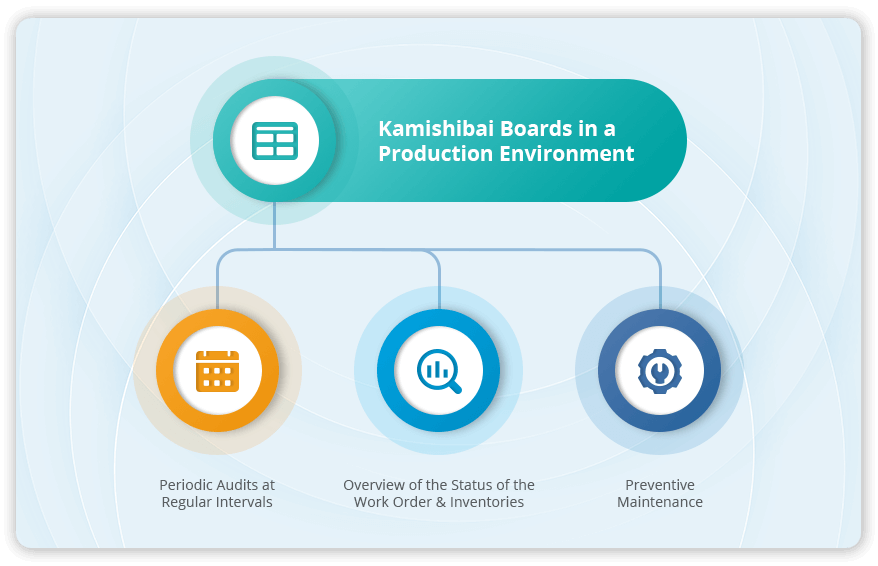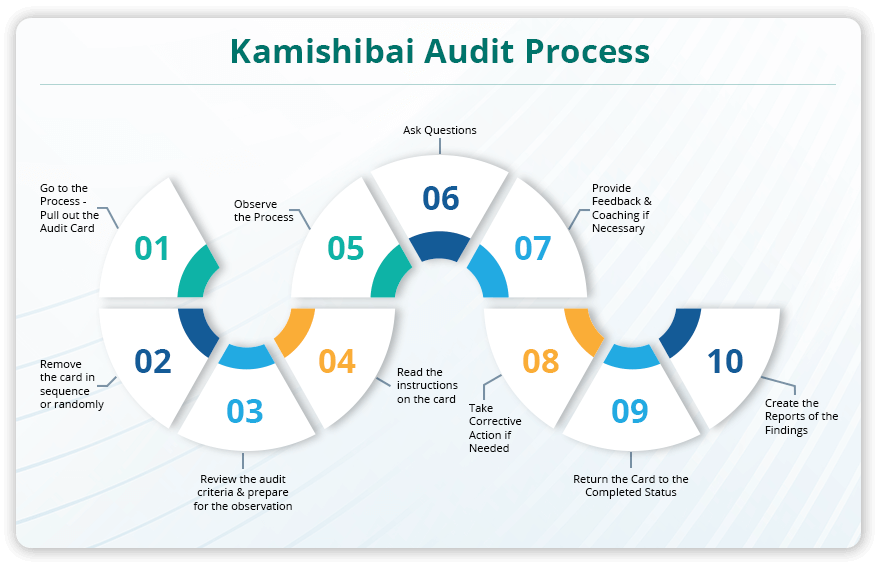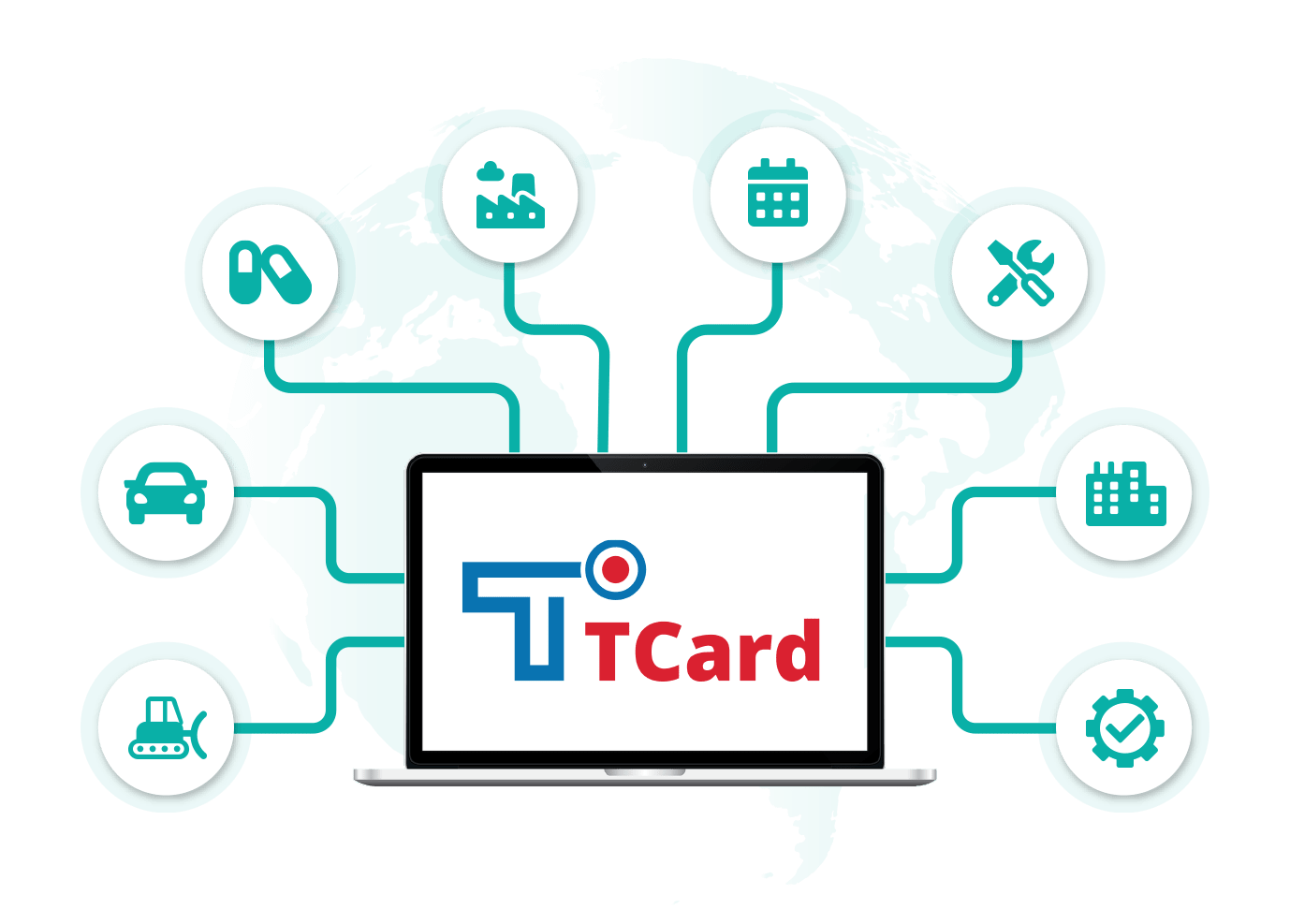Visualise your Production plans with the Lean Kamishibai Boards
Audit every step of your production processes on the shop floor invariably with the kamishibai board lean visual management system.
Contents
- What are Kamishibai Boards?
- What does Kamishibai mean?
- What is Kamishibai in Lean?
- What is a Kamishibai used for?
- What is a Kamishibai Card?
- What is a Kamishibai Audit System?
- Why is Kamishibai a vital Lean Tool for Manufacturers?
- How does the Kamishibai Board work?
- What is Process Confirmation?
- How do you conduct a Confirmation Process?
- What are the benefits of using a Kamishibai Board?
- What is the use of Kamishibai Boards in a Production Environment?
- How to make a Kamishibai Board?
- What are the components of a Kamishibai Board?
- How is a Kamishibai Audit process conducted?
- Layered Process Audits using Kamishibai Board
- What is a Process Audit Checklist?
- What are Digital Kamishibai boards?
- How can the Digital Kamishibai Boards help in your carbon reduction policy?
What are Kamishibai Boards?
Kamishibai board is a lean visual management tool that helps your manufacturing facility to perform process confirmation audits and identify deviations from the standards. Kamishibai systematic audits check if the processes are performed how they are supposed to be and improve the production processes through consistent audits.
What does Kamishibai mean?

Originally popularised by the Toyota Production System(TPS), the Kamishibai process is an old Japanese tradition of "Paper Theatre" or picture storytelling. The narrator performs with the help of standard-sized illustrated paper cards in which the texts are written, where the audience can compare their lives to the moral standards of the story and do a self-audit. Kamishibai board audits use the same concept of using illustrated cards to conduct the checks in the process standards.
What is Kamishibai in Lean?
Kamishibai in lean is a visual control point in the shopfloor used for performing audits within a manufacturing process. The kamishibai board contains a series of cards. A card with green and red colours on either side contains the checklists to be confirmed. In the audits, if the task has been completed successfully, the green side of the card is inserted into the board. On the other hand, if the task still needs to be completed and requires attention, the Red side is put back into the board.
What is a Kamishibai used for?
Kamishibai boards form the visual management tools in the workplace that perform the shop floor audits. Kamishibai boards identify the deviations from the standards, identify the improvements, and assist with allocating, sequencing, executing, and following essential work routines and tasks. Kamishibai forms the way to make the process standardised, visible and accessible on the Gemba.
Book a Demo to know how your Organisation can benefit from Kamishibai Audits
What is a Kamishibai Card?

Kamishibai cards on the board contain all the data regarding how the process confirmation needs to be done. The cards containing the Red and Green colours on either side of them are placed on the Kamishibai boards with the details of :
- What to confirm?
- How to confirm?
- Who is responsible for taking the actions?
During the Kamishibai audits, the card with the details of what is to be confirmed is taken out. Once it is done, change the red side of the card to its green side and leave remarks on it. Place the green card back into the board. Or else, if the process still needs to be completed or produce the intended results, then the red side of the card is put back into the board.
What is a Kamishibai Audit System?
Kamishibai audit system using the lean visual management processes performs the audits and checks if the operations in your factory are performed according to the standards. The kamishibai boards containing the cards forms the audit area from where the supervisor selects the audits according to the schedule or sometimes randomly. These cards ensure that the audits are conducted consistently, the safety and cleanliness of the workplace, such as 5S, are maintained, and the quality checks are completed.
Why is Kamishibai a vital Lean Tool for Manufacturers?
In a manufacturing facility, the kamishibai boards form a visual management lean tool similar to an hour-by-hour production status board. With the help of the kamishibai boards, the supervisors confirm the execution of the production activities and provide room for improvements by measuring the performance.
How does the Kamishibai Board work?

Kamishibai boards are placed on the shop floor within the area of the processes under the scope of the audits and deliver essential information at a glance. The Kamishibai auditing system provides a complete overview of the processes happening across the factory floor.
The cards containing the details of the tasks are placed on the kamishibai board. Each card is double-sided with Red and Green colours on either side. As the audit progresses, the supervisor checks the process confirmation checksheets for the key points that need to be checked.
If the process has been completed successfully, the green side of the card is inserted back into the board. Or else, if the task remains incomplete, the red side of the card can be inserted back, and setbacks are analysed. This allows them to take corrective actions and provides room for improvement.
What is Process Confirmation?
Process confirmation is a set of systematic audits that checks if the operations in the production areas are working according to the pre-defined standards. Process confirmation audits can include both routine or random checks. The managers perform this by going to the shop floor directly, which lets them easily understand the obstacles that are keeping the people away from following the process standards and what needs improvement.
How do you conduct a Confirmation Process?
Process confirmation is the systematic audit method to check whether the work is done according to the standards and control points. The steps include:
- Going to the process
- Pulling out the audit card
- Reading the instructions on the card
- Observing the process
- Asking questions
- Providing feedback
- Taking corrective action if needed
- Returning the card to the completed status
What are the benefits of using a Kamishibai Board?
- Kamishibai board offers control to the Team leader and helps them manage the line.
- Develops team participation through group involvement
- Builds ownership within the teams
- Communicates across shifts that tasks are completed
- Routine auditing of the tasks
- Correct any detected anomalies and faults in the tasks.
- To prevent the reoccurrence of concerns, i.e. Quality, Safety
- Can regulate frequencies of the audit
- Delegation of responsibilities on a daily basis
- Visual Management of Scheduled Task
- Continuous improvement of the production processes.
What is the use of Kamishibai Boards in a production environment?

Manufacturing industries use the Kamishibai boards to track production progress. It contains information about what process is yet to be done, which is in progress and what has already been completed. The board contains cards with colours indicating the tasks' status. For example, For a completed task, the card with the green side is placed on the board and for an incomplete one or one that needs attention, the red side is put back.
The other benefits that the Kamishibai boards offer in the production environment include the following:
-
Periodic audits at regular intervals
You must avoid risking your customers having a different experience every time they do business with you. You need not reinvent your processes with new customers. Therefore the manufacturers ensure that the production is working effectively and the customers are delivered the quality products at the right time. Kamishibai boards ensure this through systematic audit systems at regular intervals. The frequency of the audit in the operations depends on the tasks performed. In addition to auditing the critical processes, the boards help identify the areas that need corrective actions and improvement. -
Overview of the status of the work order and inventories
Kamishibai boards track each task's progress and display the production status overview. This ensures that each task is completed on time and that operations are carried out smoothly. It also monitors the status of the inventories that are in use. This also helps use the right inventories at the right time without trouble. -
Preventive Maintenance
Kamishibai boards on the production floor can help in initiating preventive maintenance. Using the kamishibai audits, the supervisors can help track the production areas and processes that are not producing the units that are not up to the standards. This forms an effective foundation for a proper preventive maintenance strategy.
How to make a Kamishibai Board?
Step 1- Identify the pillars that need to be checked.
By analysing the process conditions and the workflow, identify the pillars in your operations that need to work according to the process confirmation standards. This ranges from the equipment settings, collection of materials or the operations done by the team.


Step 2- Define the checks under the identified pillars
Discuss with your team the critical processes that need improvement and find ways to improve them. Identify the checks or the work standards you have identified to introduce the new improvement technique. Place the checks under each pillar or the Safety, Quality, Delivery, Costs or People metrics. List out the checks to be identified under each pillar and how to confirm them.
Step 3- Prepare the process confirmation checklists.
The checks identified under each pillar will have a list of audit checklists that will help conduct the checks. These may be the questions which can calculate the score of the completion of the process checks. The total score is calculated for the checksheets in the audits, and the administrator doing the audit can select the shift, work centre and operator at the time of the audit.


Step 4- Place the card on the Kamishibai board.
Each card placed on the board is double-sided with Red and Green sides on either side. It contains the details of exactly how the kamishibai audits will be conducted.
- What to confirm?
- How to confirm?
- Who is responsible for taking the actions?
During the Kamishibai audits, the card with the details of what is to be confirmed is taken out. Once it is done, change the red side of the card to its green side and leave remarks on it. Place the green card back into the board. Or else, if the process still needs to be completed or produce the intended results, then the red side of the card is put back into the board.
Step 5- Adjust the frequency of the audits.
The audit frequency is fixed according to the processes' nature and importance. It can be conducted on a daily, weekly or monthly basis. The daily audit standards and procedures will differ from the weekly or monthly audits.

What are the components of a Kamishibai Board?
A kamishibai card contains the following:
- Flip over cards – The double-sided cards with red and green colours on either side containing the checks that need to be done.
- Standard work instructions – Instructions on how the audits should be performed- 5 W and 1 H( Who, what, when, where, why and how).
- Audit frequency – schedule containing the audit frequency as to whether the audits are conducted daily, weekly or monthly.
- Audit remarks – visual record of conclusions, root cause analysis, and countermeasures that need to be taken.
How is a Kamishibai Audit process conducted?

- Go to the process- Pull out the audit card.
- Remove the card in sequence or randomly.
- Review the audit criteria and prepare for the observation.
- Read the instructions on the card
- Observe the process
- Ask questions
- Provide feedback and coaching if necessary
- Take corrective action if needed
- Return the card to the completed status
- Create the reports of the findings.
Layered Process Audits using Kamishibai Board
Layered Process Confirmation or Layered Process Audit(LPA) is a systematic audit process which is a quality technique which focuses on observing and validating how the products are made rather than inspecting the finished products. It involves all the employees in the auditing process and includes the integrated corrective and preventive actions taken either during or immediately after the audit. It helps manufacturers and service providers take control of the process and reduce mistakes. Kamishibai reports on the audits help to analyse the action plans and remove the anomalies in the process.
Discover MoreWhat is a Process Audit Checklist?
A process audit checklist forms detailed instructions of the processes that need to be checked during the kamishibai audits. On auditing, the total score is calculated for the checklists, and the remarks and observations are logged. The administrator doing the audit can select the shift, work centre and operator at the time of the audit.
Read MoreWhat are Digital Kamishibai boards?

Digital Kamishibai board is a lean visual control tool that performs process confirmation audits for various operations. These audits are carried out consistently and periodically as per the schedule allocated to each individual. The supervisors visualise the production statuses through the Kamishibai boards displayed on the TV screens on the shop floor. Every time an audit is created, the operator conducts the checks on the iPad or the web-based solution. The interactive dashboards display the real-time status of the various process confirmation audits. The data collected across the different audits can quickly identify the root cause of issues and suggest corrective action to address the problem.
Upgrade your Audits to Digital KamishibaiHow can the Digital Kamishibai Boards help in your carbon reduction policy?
Moving from the paper kamishibai cards to the Digital Kamishibai Boards itself is the key to the Net zero transition. Let us see how Kamishibai supports this.
- Each audit card is a single sheet of paper for the physical Kamishibai. Using paper inevitably grows your carbon footprint and consumes more energy. Going digital means cutting out waste and going greener.
- Digital Kamishibai cards generate reports and do the data analysis on what causes emissions and help in taking actions to lower them.
- Better insights into energy consumption optimise the system's efficiency to avoid over generation of the products and go carbon-free.
- The defects tags are raised and recorded within the action plan as soon as the defect is detected, minimising the energy consumption and carbon footprint.
- Digitised data is more auditable, making it error-free and enhancing the data processing for Net Zero.
Learn more about Process Confirmation Audits and Kamishibai Boards
Drive Operational Excellence with Digital Kamishibai Boards
Streamline audits, enhance visual management, and boost production efficiency with Kamishibai Boards. Discover how they can transform your shop floor processes today.


